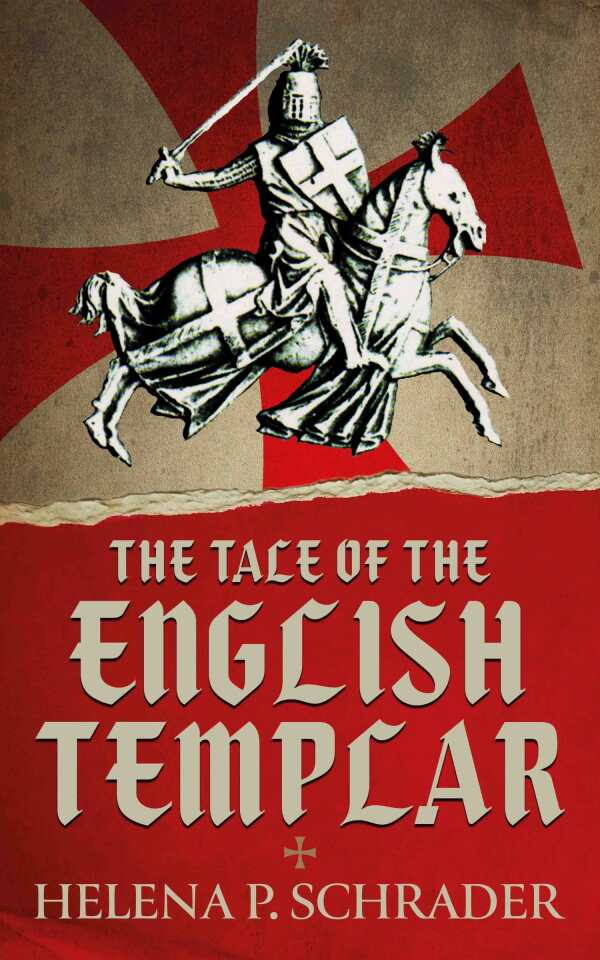
The Tale of the English Templar
Capturing medieval religious uncertainty and persecution with clarity, The Tale of the English Templar is an evocative historical novel.
In Helena P. Schrader’s provocative historical novel The Tale of the English Templar, the Knights Templar are on a quest for survival in medieval France.
In 1307, an English Knight Templar, Sir Percy de Lacy, who experienced tragedy in his youth, is arrested in France on suspicion of heresy. King Philip of France hopes to denounce the holy older, having its members tortured to gain confessions. After Percy escapes, he goes on a mission to redeem the Templar knights, aided by members of a noble French family.
Percy, who exemplifies respect for others, vacillates between disdain for and acceptance of his religion as his faith is tested. Introspective through his suffering, he forges new determination and mental clarity, evolving under duress and during battles. He is accompanied by Sir Geoffrey de Preuthune, a nobleman who speaks his mind, and Geoffrey’s granddaughter, Felice, whose mental maturity and spiritual conviction build as she experiences personal trials during her efforts to uphold the Templars’ values.
Meanwhile, Felice’s childhood friend, Umberto, becomes a novice Dominican priest; he is beholden to coldhearted Father Elion, who guides the Templars’ torture. And Pope Clement V strives to stay in King Philip’s good graces while Sister Madeleine nurses lepers back to health and plays a crucial role in helping Geoffrey and Percy. The members of this extensive cast each take turns sharing their perspectives, though some of the sudden shifts in point of view are awkward and slow the book’s pace. Still, most chapters end with tension, building anticipation for what’s to come. Indeed, the story works toward an exciting denouement.
Blending themes of hypocrisy and loyalty, the novel’s success lies in its portrayals of religious uncertainty and persecution. It depicts with clarity people’s immoral behavior in pursuit of political power. Mixing dialogue, narrative, and introspection, its prose is descriptive but also sometimes too weighty with period details. For instance, people’s attire is afforded ample space, including religious “black, brown, and white habits,” the noble “marigold silk surcoat embroidered with black Catherine wheels,” and the “splayed cross” on the Templars’ clothing. And while the graphic torture scenes against the Knights Templar in dank underground dungeons are belabored, the book’s violence is balanced out by the pleasure Percy takes in “light filtered through trees” and the “scent of hay and the twittering of birds.”
Extolling moral religious conviction and duty, The Tale of the English Templar is a gripping historical novel in which the Knights Templar fight against evil ambition in medieval France.
Reviewed by
Katy Keffer
Disclosure: This article is not an endorsement, but a review. The publisher of this book provided free copies of the book and paid a small fee to have their book reviewed by a professional reviewer. Foreword Reviews and Clarion Reviews make no guarantee that the publisher will receive a positive review. Foreword Magazine, Inc. is disclosing this in accordance with the Federal Trade Commission’s 16 CFR, Part 255.
